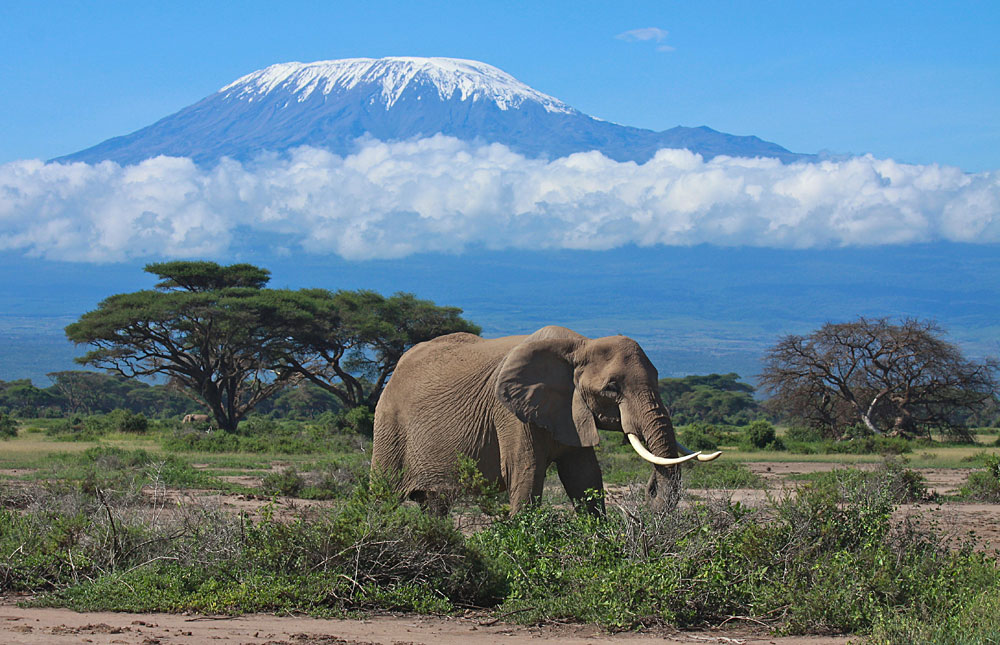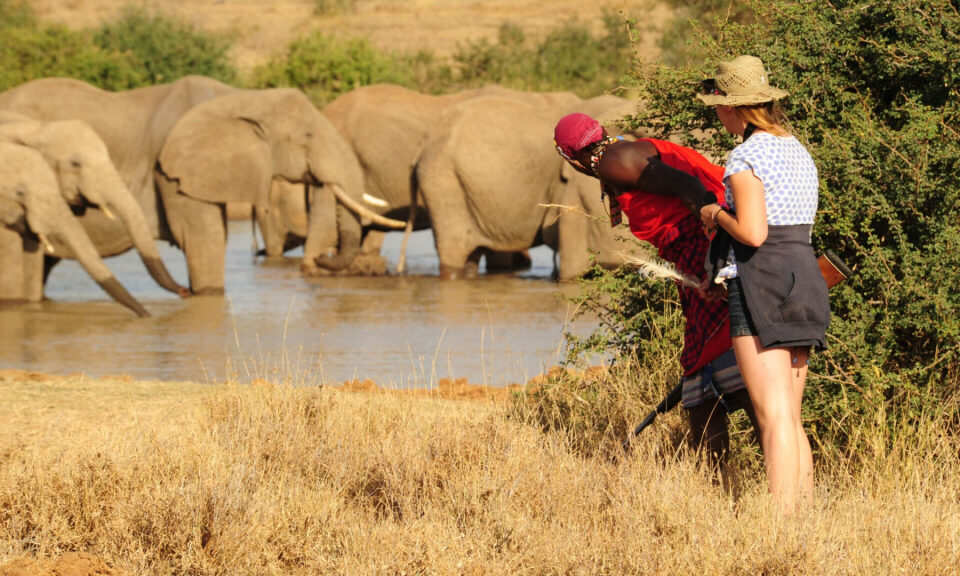- GET IN TOUCH WITH US:
- +256 753518160
- +256 777842166
- info@experiyatourcompany.com

What’s special about Tsavo East and Tsavo West?
November 17, 2025
Can I do a night game drive in Kenya?
November 17, 2025What’s the best park for elephant sightings in Kenya?

What’s the Best Park for Elephant Sightings in Kenya?
Kenya is one of Africa’s premier safari destinations, famous for its abundant wildlife, diverse landscapes, and well-protected national parks. Among its many treasures, elephants stand out as some of the most iconic and beloved animals. Towering, intelligent, emotional, and incredibly photogenic, elephants captivate travelers and photographers alike. Because of their popularity, many safari-goers ask an important question when planning their trip: What’s the best park for elephant sightings in Kenya?
The short answer is Amboseli National Park—widely regarded as the elephant capital of Kenya, and arguably one of the best places in the world to watch elephants up close. However, Kenya is home to several parks that offer exceptional elephant encounters, each with its own unique features, landscapes, and safari atmosphere. This detailed guide explores why Amboseli is the top choice, while also highlighting other remarkable parks where elephants roam freely and in great numbers.
Amboseli National Park: The Elephant Paradise of Kenya
Amboseli is world-famous for its large elephant herds and dramatic backdrop of Mount Kilimanjaro. It is often described as the ultimate destination for elephant enthusiasts because nowhere else in Kenya—or Africa—do elephants appear as calm, photogenic, and abundant.
1. Home to Some of Africa’s Most Studied and Iconic Elephants
Amboseli’s elephant population is incredibly well-protected and researched. Thanks to long-term scientific studies conducted for over 40 years, visitors can enjoy encounters with well-known elephant families. These elephants are accustomed to safari vehicles, making it possible to observe their behavior at close range without disturbing them.
2. Large Herds and Big Tuskers
Amboseli hosts over 1,500 elephants, including some of the last remaining “big tuskers”—huge elephants with tusks that can nearly reach the ground. These magnificent individuals are extremely rare and highly prized by photographers.
Amboseli’s open plains, swamps, and woodlands provide perfect conditions for viewing elephants as they graze, drink, bathe, or travel in large family groups led by matriarchs.
3. Breathtaking Backdrops: Kilimanjaro and Open Plains
There is no safari sight more iconic than elephants walking across Amboseli’s golden savannah with Mount Kilimanjaro looming in the background. The contrast of giant elephants against Africa’s tallest mountain creates photos and memories that last a lifetime.
4. Swamps That Attract Elephants Year-Round
Amboseli receives much of its water from underground streams originating from Kilimanjaro’s glaciers. These streams feed lush wetlands where elephants gather daily to cool off, bathe, and feed on aquatic vegetation. The swamps draw elephants even during the driest months, ensuring year-round sightings.
5. Easy, Predictable Sightings
Amboseli’s open landscapes and high elephant density make spotting these majestic animals easy and consistent. Unlike parks with dense vegetation or wide dispersal patterns, Amboseli almost guarantees elephant sightings during any game drive.
For travelers who dream of spending hours observing elephant families interact, communicate, and nurture their young, Amboseli is unmatched.
Other Top Parks for Elephant Sightings in Kenya
While Amboseli is the crown jewel, several other parks in Kenya offer exceptional elephant experiences. Each park contributes to Kenya’s rich elephant heritage and provides unique landscapes for observing these magnificent animals.
Tsavo East National Park: Home of the Red Elephants
Tsavo East is famous for its red elephants, which coat themselves in the region’s rust-colored soil, giving them a striking reddish-orange hue. It is one of the last great wilderness areas in East Africa—vast, remote, and filled with open plains.
Why Tsavo East Is Special:
It has one of the largest elephant populations in Kenya.
Elephants roam in huge herds across wide landscapes.
The red clay soil gives the elephants a unique and beautiful appearance.
The sheer scale of Tsavo East makes the elephants feel wild and free.
Tsavo East’s emptiness and open savannahs create breathtaking scenes of elephants moving across endless horizons.
Tsavo West National Park: Elephants in Dramatic Landscapes
Tsavo West, though more rugged and wooded than Tsavo East, also offers fantastic elephant encounters.
Highlights of Tsavo West:
Elephants are often seen near Mzima Springs, drinking the crystal-clear water.
The varied terrain—volcanic hills, lava flows, forests—creates dramatic photography opportunities.
Large herds roam the park, especially during the dry seasons.
While sightings can be more adventurous due to thicker vegetation, the reward is a more intimate, off-the-beaten-path experience.
Samburu National Reserve: Elephants in a Unique Desert Landscape
Samburu is one of Kenya’s most beautiful and culturally rich reserves. Its elephants are known for their size, calm behavior, and adaptation to semi-arid conditions. The reserve is fed by the Ewaso Ng’iro River, which attracts elephants daily.
What Makes Samburu Special:
Elephants frequently gather along the riverbanks.
Photographers love the golden light that enhances elephant sightings.
Samburu elephants are habituated and comfortable around vehicles.
The landscapes—rocky outcrops, doum palms, and riverine forests—add a unique flair.
Some of the most striking elephant photography in Kenya comes from Samburu.
Maasai Mara National Reserve: Strong Elephant Populations and Family Herds
Although the Maasai Mara is most famous for big cats and the Great Migration, it also hosts impressive elephant populations. Large herds move across the plains, and elephants are commonly seen during game drives.
Why Visit Mara for Elephants:
The elephants here are large, healthy, and often found in family groups.
Open plains offer fantastic photography opportunities.
Elephants visit the Mara River to drink and bathe.
The Mara may not surpass Amboseli for elephants, but it offers consistent, rewarding sightings.
Aberdare National Park: Forest Elephants in Misty Landscapes
For travelers seeking a unique and mystical elephant experience, Aberdare National Park offers encounters with forest elephants. These elephants are slightly smaller and more elusive than their savannah cousins.
What Makes Aberdare Special:
Elephants appear at waterholes near tree lodges like The Ark and Treetops.
The park’s misty forests create a magical, atmospheric safari experience.
Less common, but incredibly rewarding, sightings.
Elephant encounters in Aberdare feel intimate and mysterious, appealing to travelers who enjoy quiet, less-traveled destinations.
Meru National Park: A Recovered Elephant Haven
Meru, once heavily affected by poaching, has experienced a powerful conservation comeback. Today, it is home to thriving elephant herds and a pristine wilderness landscape.
Why Meru Is Special:
Less visited than other parks, offering seclusion.
Elephants roam freely across lush plains and riverine woodlands.
The rehabilitation efforts here symbolize Kenya’s dedication to conservation.
How to Choose the Best Elephant Safari in Kenya
When deciding where to go for the best elephant experience, consider your preferences:
Choose Amboseli if you want:
Huge elephant herds
Close and predictable sightings
Photography with Mount Kilimanjaro
Big tuskers
Easy access from Nairobi
Choose Tsavo East if you want:
Red elephants
Large, wild landscapes
An adventurous safari
Choose Samburu if you want:
Elephants near rivers
Unique semi-arid landscapes
Authentic cultural experiences
Choose the Maasai Mara if you want:
Elephants plus big cats and the Great Migration
A fuller safari experience
Choose Aberdare if you want:
Elusive forest elephants
Foggy, enchanting scenery
Choose Meru if you want:
Seclusion
Recovered wilderness
A balanced mix of elephants and diverse wildlife
Kenya: A Global Leader in Elephant Conservation
Kenya has made remarkable strides in protecting elephants, investing heavily in anti-poaching units, wildlife corridors, community conservancies, and sustainable tourism programs. Thanks to these efforts, elephant populations have stabilized and grown in many regions.
Traveling to Kenya contributes directly to these conservation efforts. Park fees, community conservancy fees, and tourism revenue help protect elephants and their habitats.
Book Your Elephant Safari with Experiya Tour Company
Whether you dream of seeing big tuskers in Amboseli, red elephants in Tsavo, riverfront herds in Samburu, or the majestic elephants of the Maasai Mara, Experiya Tour Company will design the perfect safari for you. Their experienced guides know the best locations and times for elephant sightings, ensuring your adventure is unforgettable.
Experiya Tour Company offers tailor-made itineraries, luxury lodge options, seamless transfers, and personalized service across Kenya’s top safari parks. Book your elephant safari with Experiya Tour Company today and experience Kenya’s gentle giants in their natural splendor.



